송현주 SONG,Hyunju 《Play, Pause, Assemble》
송현주 | 2025.07.19 (토) ~ 2025.8.9 (토)
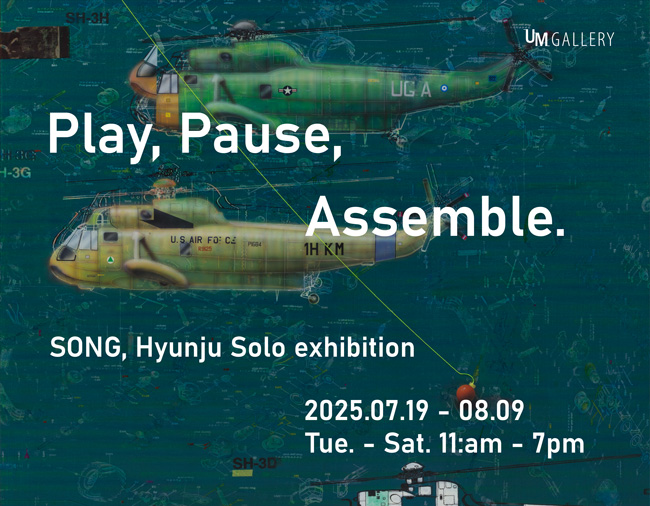
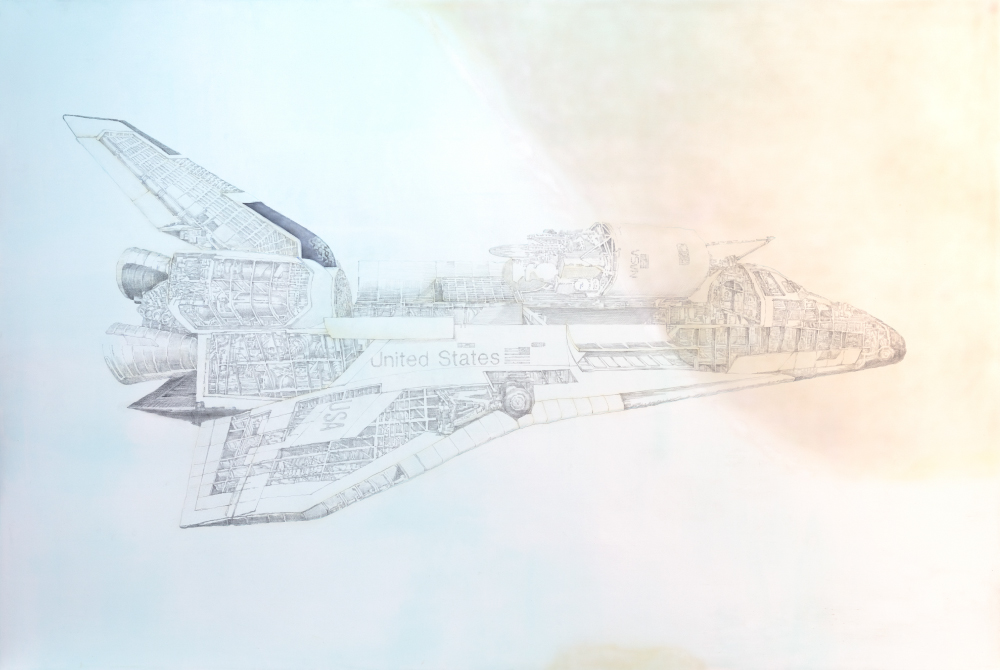
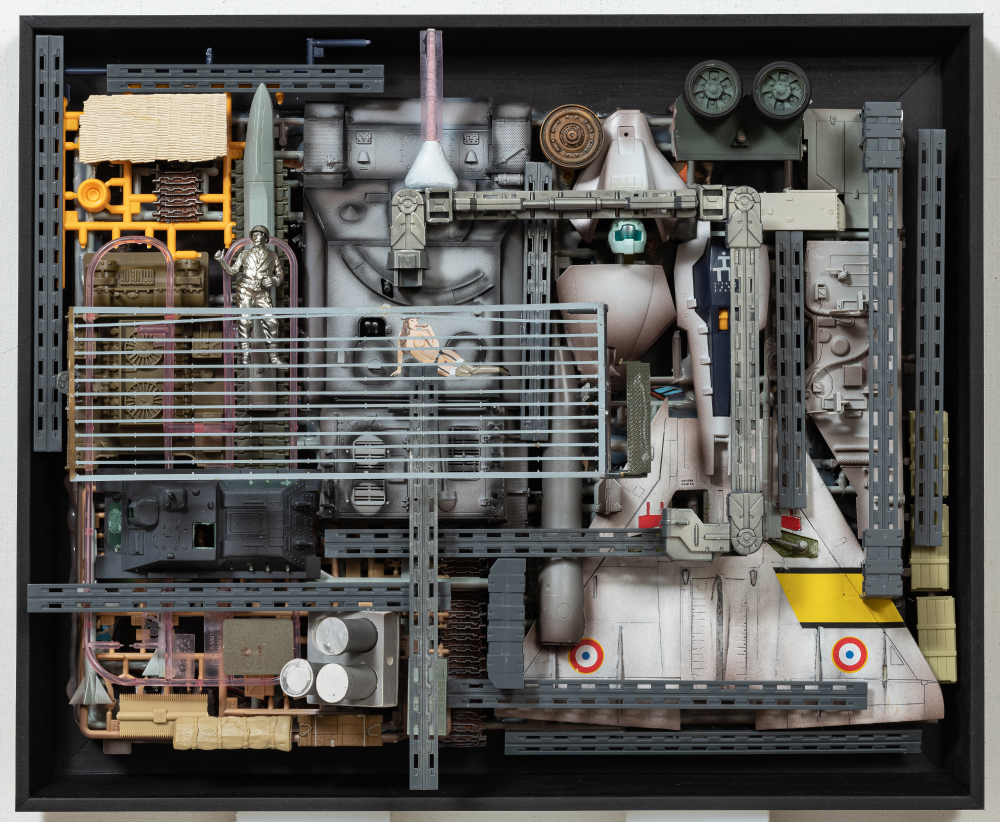
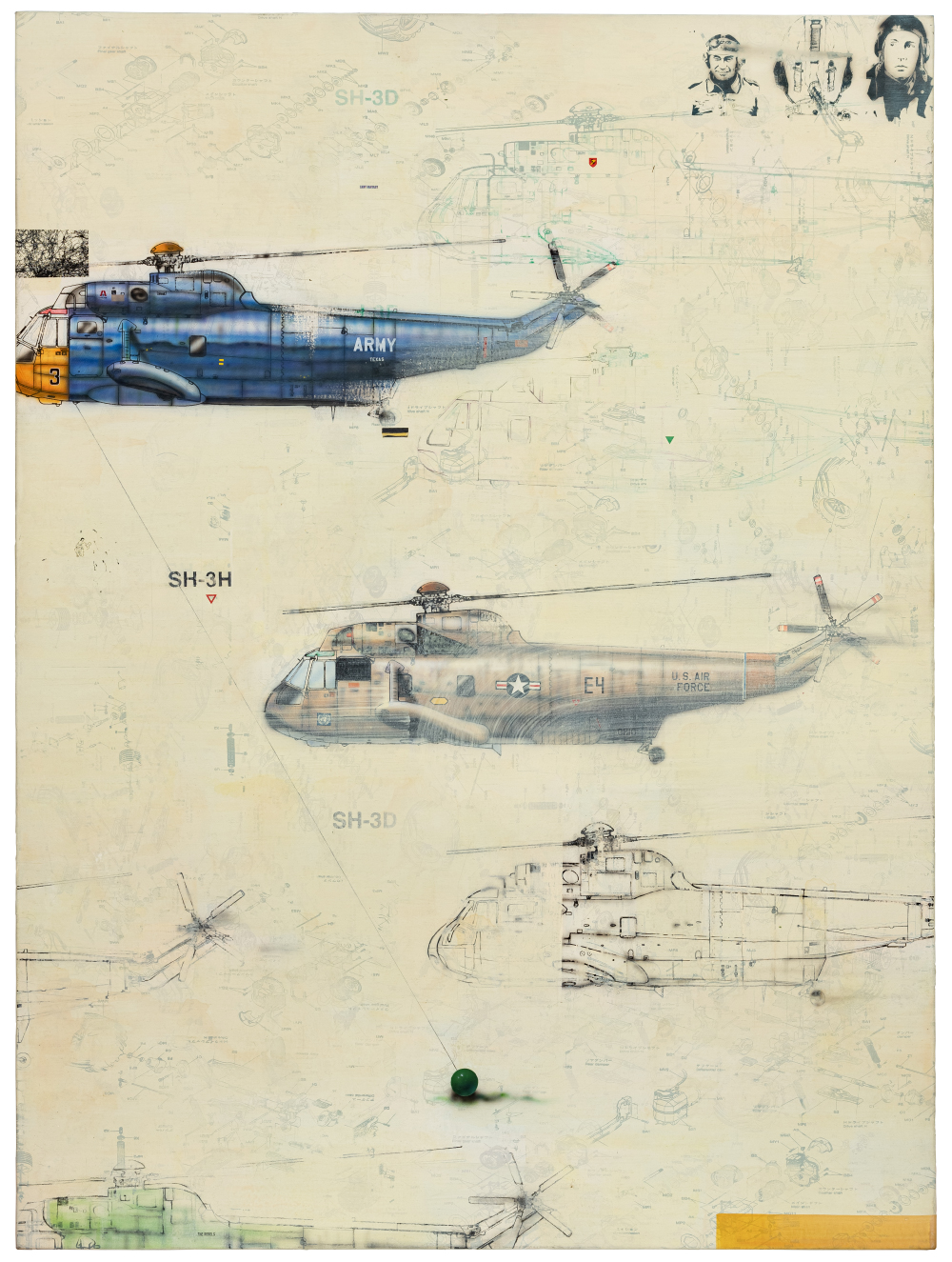
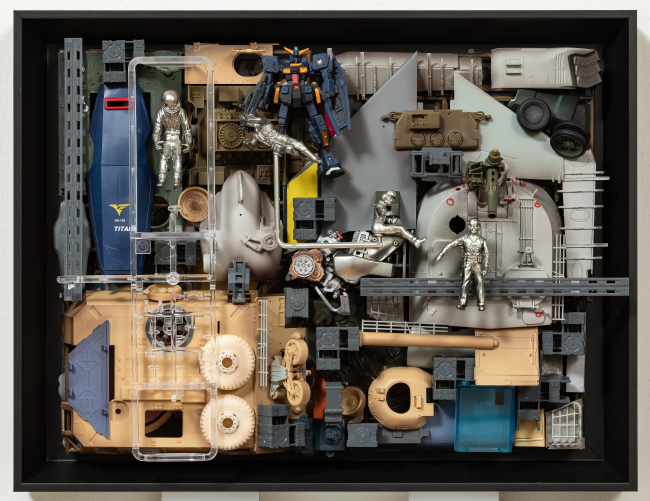
Play, Pause, Assemble: 조립되는 감각, 정지된 장면
1. 전쟁을 본다는 것, 그것은 조립하는 일이다
1991년 걸프전은 전쟁 보도의 전환점이었다. CNN이 세계 최초로 전쟁을 실시간 위성 생중계한 이 사건은, 전쟁을 더 이상 직접 겪는 것이 아닌 ‘보는’ 방식으로 체험하게 된 첫 세대를 탄생시켰다. 고속 촬영된 미사일 열화상, 야간 투시경 영상, 전투기 시점에서의 공습 장면, 그리고 그 모든 장면에 삽입된 뉴스 자막과 전자음들은 전쟁을 실재가 아닌 기호적 질서로 전환시켰다. 이제 전쟁은 사유의 대상이기보다, 감각적 표면 위에서 소비되는 장면이 되었고, 이 새로운 감각 구조 안에서 자라난 이들은 그 충격을 고스란히 잠재의식에 간직한 채 성인이 되었다.
송현주는 이러한 세대적 감각의 전환에 위치한 작가다. 그는 전쟁을 직접적으로 기억하거나 경험한 세대는 아니지만, 전쟁을 텔레비전 화면 속 구조물로 인식한 최초의 세대에 속한다. 그리고 그의 회화는 이 시청각적 구조를 다시 해체하고 조립하는 조형적 실험으로 기능한다. 여기에서 전쟁은 다시금 감정의 대상이 아니라, 조형적 질서와 구조적 해체를 거쳐 재조립되는 이미지의 물성으로 작용한다.
2. 구조적 감각의 회화, 조립하는 시선
송현주의 작업은 철저히 설계적이다. 회화의 표면 위에 펼쳐지는 이미지들은 감정이나 내러티브보다 도면과 부품, 파편과 재배열의 언어를 따른다. 마치 플라스틱 키트에서 부품을 하나씩 떼어내어 설명서대로 조립하듯, 그는 전투기, 함대, 탱크, 무기 시스템 등 기계적 전쟁 장치의 외형을 회화적 평면 위에 해체하여 배치한다. 이때 그는 하나의 대상이나 장면을 묘사하지 않는다. 오히려 기억 속 구조의 질서, 혹은 조립을 위한 가상의 도면을 따라 회화를 구축한다.
여기서 중요한 것은 이 회화가 묘사도, 은유도, 풍자도 아니라는 점이다. 송현주는 회화를 통해 어떤 정서적 진술을 하려 하지 않는다. 그에게 있어 회화란, 이미지를 구성하고 조직하는 감각의 도식이며, 이를 통해 세계를 조립하고 감각을 훈련하는 일이다. 그렇기에 그의 회화는 오히려 ‘도면적 회화’이자 ‘감각 조립 장치’라 불릴 수 있다. 그 안에서 우리는 형태와 질서를 파악하려 애쓰지만, 결코 완성된 장면은 등장하지 않는다. 중단된 조립, 혹은 잠정적 구성 상태의 파편들만이 우리 앞에 놓일 뿐이다.
3. 키덜트적 감각과 회화적 엔지니어링
그의 조형 언어에는 키덜트적 미감이 분명 존재한다. 그러나 이는 단순한 유희나 취미의 반영이라기보다, 감각과 질서를 해체하고 구성하는 데 익숙한 한 세대의 태도를 드러내는 표현 방식이다. 조립식 전투기, 무장 헬기, SF적 상상력으로 구성된 조형 요소들은 송현주의 손에서 회화적 엔지니어링의 일부가 된다. 그는 이 물성들을 이용해 실제로 존재하지 않는 설계도를 그린다. 관람자는 그 설계도를 해독하려 시도하지만, 그 과정에서 오히려 이미지란 본디 완성될 수 없는 구성물임을 경험하게 된다.
이 회화의 표면은 정지되어 있지만, 내부는 끊임없이 운동 중이다. 색과 선, 조형 단위들의 배열은 마치 조립이 진행 중인 키트처럼 임시적이며 불안정하다. 이 불완전한 조립 상태야말로, 작가가 말하는 감각의 상태일지 모른다. 정지된 전쟁의 기억과 조립 중인 시지각의 구조, 그 경계에 위치한 그의 회화는 완성된 회화를 넘어서는 또 다른 시공을 지시한다.
Epilogue: 재조립된 감각, 정지된 장면의 잔상
송현주의 회화는 이야기를 들려주지 않는다. 그는 서사 이전의 구조에 주목하며, 감정 앞의 설계도를 펼친다. 전쟁을 ‘기억하는 방식’이 아니라, 전쟁을 ‘조립하는 방식’을 묻는다. 파편화된 기체, 반쯤 조립된 함선, 조형 요소로 분해된 평면 위의 상징들. 그 모든 요소는 실제보다 정교한 모형처럼 배치된다.
이곳은 완성된 진열장이 아니라, 조립 중인 구조체다. 그 안에서 우리는 기억의 선명함이 아니라, 이미지를 재조립하는 행위 자체가 불러오는 새로운 감각과 마주하게 된다. ‘Play’, ‘Pause’, 그리고 ‘Assemble’. 재생과 정지 사이, 설계와 파편 사이에 놓인 이 회화적 평면은 관람자를 단순한 감상의 자리에 머무르게 두지 않는다. 오히려 우리 각자가 어떤 방식으로 세상을 조립해왔는지를 되돌아보게 만든다.
송현주의 회화는 끝맺지 않는다. 그는 조립을 멈추지 않고, 그 조립의 흔적 속에서 회화가 아직도 살아있는 질문이라는 것을 말없이 증명해낸다.
Play, Pause, Assemble: Assembled Sensation, Paused Frames
An Analytical Text on the Work of Song Hyunju
1. To See War Is to Assemble It
The Gulf War of 1991 marked a turning point in the history of war representation. With CNN’s real-time satellite broadcast of the war, a new generation was born—one that encountered warfare not as lived experience, but as a mediated event on screen.
Thermal imaging of missile strikes, green-tinted night vision footage, jet fighter cockpit views, and ticker-tape captions accompanied by synthesized audio gave shape to a new mode of perception. War ceased to be reality and became image—encoded, symbolized, and consumed through television.
Song Hyunju belongs to the generation that first internalized war through this mediated lens. Although he did not personally experience armed conflict, his formative encounters with war were structured by the schematics of visual technology. In his paintings, he does not reconstruct emotional memories of trauma or violence. Instead, war emerges as a material system of visual fragments—something to be deconstructed, measured, and reconstructed.
2. The Structural Gaze: Painting as Blueprint
Song’s work is fundamentally architectural. His canvases resemble schematic diagrams or exploded views, not narrative scenes. Components of aircraft, warships, tanks, and missile systems appear not as dramatic illustrations but as plastic-like units disassembled for reassembly. Each painting resists singular interpretation; it does not represent a moment in time, but rather a logic of construction.
In this sense, his work belongs neither to the tradition of depiction nor to the realm of symbolic critique. Song does not seek to tell a story or offer a stance. His goal is instead to build images—to practice visual engineering through painting. The work functions as a kind of instructional map of memory and perception, where completeness is always deferred, and meaning emerges not through subject matter but through configuration.
3. The Kidult Sensibility and Visual Engineering
There is a distinct “kidult” aesthetic in Song’s practice—a fascination with miniature models, toy-like military objects, and mechanical systems. But this is not a superficial nod to nostalgia. Rather, it signals a deeper generational condition: the impulse to comprehend and navigate a fragmented world by assembling images, rules, and structures.
Jet engines and hulls, missile nozzles and gear modules, digital markers and fake insignia—each part appears like a component from a kit. Yet unlike conventional model-making, there is no final form. These incomplete assemblies and floating modules invite the viewer to imagine construction without closure. His painting surfaces are static, but their inner logic is dynamic—always in mid-construction.
This is where Song’s painterly language departs from both abstraction and figuration. He proposes a third approach: the surface as operating space for a memory that is not recalled, but rebuilt—fragment by fragment, instruction by instruction.
Epilogue: The Trace of Reassembled Vision
Song Hyunju’s paintings do not narrate; they draft. They prioritize schematics over story, structure over sentiment. His work does not ask what war feels like—it asks how war has been built into our seeing. The fragments of fighter jets, half-assembled vessels, and broken insignia are less about destruction than about the logic of reassembly.
These surfaces do not invite passive viewing. They function as arenas where our habits of perception are tested, fragmented, and reconfigured. In this sense, his work is not finished; it is paused. It waits for the viewer to resume—to pick up a fragment, follow a line, imagine a structure.
“Play. Pause. Assemble.” The three verbs in this exhibition’s title are not simply stages of action; they are a proposition for how we now see, remember, and construct. In an age saturated with images, Song Hyunju’s work offers not clarity, but a discipline of recomposition. And in doing so, his paintings remind us that the image—like memory—is never complete. It is always in pieces, always in process.
